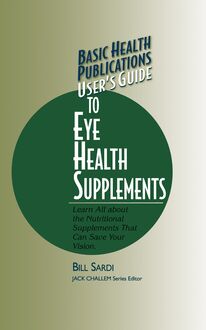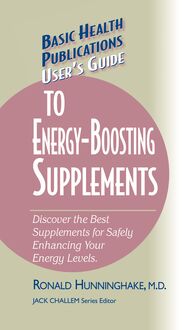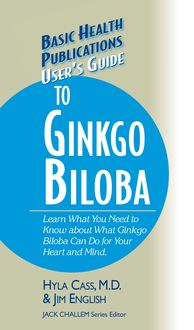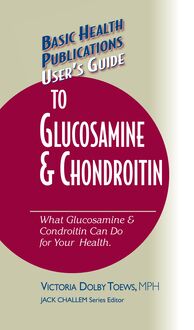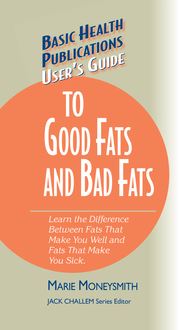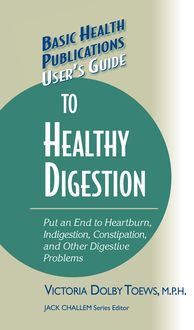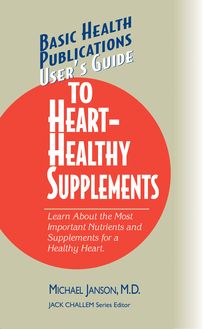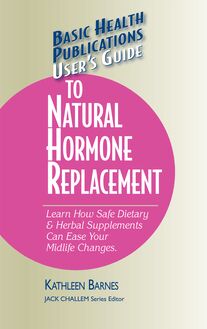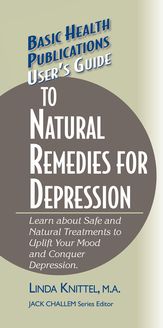-
 Univers
Univers
-
 Ebooks
Ebooks
-
 Livres audio
Livres audio
-
 Presse
Presse
-
 Podcasts
Podcasts
-
 BD
BD
-
 Documents
Documents
-
- Cours
- Révisions
- Ressources pédagogiques
- Sciences de l’éducation
- Manuels scolaires
- Langues
- Travaux de classe
- Annales de BEP
- Etudes supérieures
- Maternelle et primaire
- Fiches de lecture
- Orientation scolaire
- Méthodologie
- Corrigés de devoir
- Annales d’examens et concours
- Annales du bac
- Annales du brevet
- Rapports de stage
La lecture à portée de main
Vous pourrez modifier la taille du texte de cet ouvrage
Découvre YouScribe en t'inscrivant gratuitement
Je m'inscrisDécouvre YouScribe en t'inscrivant gratuitement
Je m'inscrisEn savoir plus
Vous pourrez modifier la taille du texte de cet ouvrage
En savoir plus

Description
Sujets
Informations
| Publié par | Turner Publishing Company |
| Date de parution | 01 janvier 2003 |
| Nombre de lectures | 0 |
| EAN13 | 9781591206057 |
| Langue | English |
Informations légales : prix de location à la page 0,0298€. Cette information est donnée uniquement à titre indicatif conformément à la législation en vigueur.
Extrait
The information contained in this book is based upon the research and personal and professional experiences of the author. It is not intended as a substitute for consulting with your physician or other health care provider. Any attempt to diagnose and treat an illness should be done under the direction of a health care professional.
The publisher does not advocate the use of any particular health care protocol but believes the information in this book should be available to the public. The publisher and author are not responsible for any adverse effects or consequences resulting from the use of the suggestions, preparations, or procedures discussed in this book. Should the reader have any questions concerning the appropriateness of any procedures or preparation mentioned, the author and the publisher strongly suggest consulting a professional health care advisor.
Series Editor: Jack Challem
Editor: Roberta W. Waddell
Typesetter: Gary A. Rosenberg
Series Cover Designer: Mike Stromberg
Basic Health Publications User’s Guides are published by Basic Health Publications, Inc.
28812 Top of the World Drive
Laguna Beach, CA 92651
1-800-575-8890 • www.basichealthpub.com
Copyright © 2002 by Martin Zucker
ISBN-13: 978-1-59120-605-7
ISBN-10: 1-59120-010-5
All rights reserved. No part of this publication may be reproduced, stored in a retrieval system, or transmitted, in any form or by any means, electronic, mechanical, photocopying, recording, or otherwise, without the prior written consent of the copyright owner.
Printed in the United States of America
10 9 8 7 6 5 4 3 2
C ONTENTS
Introduction
1. An Amazing Molecule “Born” in a Refrigerator
2. The Great Energizer
3. The Great Antioxidant
4. The Great Antiaging “Secret”
5. Keeping Your Heart Healthy Longer
6. If It’s So Good, Why Aren’t Cardiologists Using It?
7. High Blood Pressure, Stroke, and Diabetes
8. Keeping Your Immune System Strong
9. Combating Nervous System Disorders
10. Keeping Your Gums Healthy
11. How to Take CoQ 10
12. The Future of CoQ 10
Selected References
Other Books and Resources
I NTRODUCTION
Y ou are the sum of your cellular parts—all several hundred trillion cells. And how you feel and function depends on how they feel and function. And how they feel and function has a lot to do with coenzyme Q 10 , better known as CoQ 10 , a vitaminlike substance produced throughout your body. Without this substance, your cells—and thus, you —couldn’t survive.
For starters, CoQ 10 is a fundamental ingredient in the energy production that keeps those trillions of cells running smoothly. A shortage of CoQ 10 translates into an energy crunch, with you and your cells running on weak batteries.
Unfortunately, that situation describes a lot of people, many of whom are outright deficient. Low levels of CoQ 10 generate a negative impact on health and, very likely, the aging process itself.
Besides generating energy, CoQ 10 is one of the body’s most powerful antioxidants. It protects you against free radicals, the destructive molecular fragments that cause accelerated aging and degenerative diseases. And, according to exciting new research, CoQ 10 also activates certain genes in a way that appears to strengthen you against disease and rejuvenate your body.
Sadly, most doctors either haven’t heard of CoQ 10 or just ignore its importance. That’s a tragedy because simply increasing the level of CoQ 10 in the body pays off with big health, energy, and therapeutic dividends.
Fortunately, CoQ 10 is available as a nutritional supplement. It’s a natural copy of what your body makes, and it’s wonderfully safe to take. Unlike pharmaceutical drugs, you don’t develop bad side effects from taking it. Moreover, you don’t need a prescription. You can buy it in health food stores just as you would vitamin C, gingko biloba, or any other supplement.
Since the 1960s, scientists in Japan, Europe, Australia, India, and the United States have been studying the healing impact of CoQ 10 , primarily on cardiovascular conditions. But during the last decade, research has expanded dynamically into many age-related diseases, including baffling brain disorders, as well as the aging process itself.
To date, there have been more than four thousand scientific studies and eleven international conferences dedicated to CoQ 10 . Yet researchers feel they have only scratched the surface in their understanding of CoQ 10 ’s formidable functions and how supplementation may contribute to better health. What’s known to date distinguishes CoQ 10 as a healing superstar and lifesaver.
Continuing research promises much more good news. In laboratories and clinics worldwide, researchers and doctors are discovering major therapeutic and preventive uses for CoQ 10 . In this book, you’ll learn about the benefits and promise of CoQ 10 , including:
• Disease prevention and slowing down the aging process in the body;
• Significant help for patients with heart disease;
• Reduction of mild to moderate hypertension;
• More energy, strength, and vitality, even for older people;
• Fortification of the immune system against illness, including cancer;
• Counteracting the adverse effects of cholesterol-lowering drugs;
• Improvement of nervous system and brain disorders; and
• Protection against gum disease, a condition affecting most adults.
These are all major considerations for individuals interested in optimum health and optimum lifespan. As you read on you will learn how CoQ 10 contributes to both.
CHAPTER 1
A N A MAZING M OLECULE “ B ORN” IN A R EFRIGERATOR
B ack in 1957, Fred Crane, Ph.D., was a young research biochemist and assistant professor working at the University of Wisconsin’s Enzyme Institute. He and his colleagues were investigating the biochemical sequence involved in cellular energy production.
Crane, now seventy-six years old and retired, recalls, “we could partly put the sequence together, but something was missing in our understanding of these molecular events. I was assigned the job to find the missing link.”
The researchers were working with beef-heart mitochondria. Mitochondria are where energy is produced inside cells. You will be hearing a lot about them in this book.
Mitochondria
Mitochondria are organelles—microscopic organs—within cells where oxygen and the derivatives of the food you eat are mixed to produce energy. Think of the mitochondria as the “power plants” that generate the energy to operate individual cells .
Mitochondria, present in both animal and plant cells, are center stage for the activity of CoQ 10 . But Crane and his team didn’t know it at the time. In fact, no scientist had ever heard of CoQ 10 .
Extracurricular Research Pays Off
On weekends, Crane liked to return to the laboratory and continue his scientific sleuthing. At one point he began examining cauliflower mitochondria.
“This wasn’t part of the program, but I always enjoyed variety, doing something different,” he says. “So I chopped up the cauliflower, centrifuged the mush, and separated out the mitochondria. On Monday mornings, when my colleagues returned to the lab, they would complain that I was stinking up the place with cauliflower.”
Smell aside, Crane’s extracurricular research led to pay dirt. He first discovered carotenes (pigments) in the cauliflower mitochondria. He thought these could be the sought-after missing link. Turning back to beef hearts, he found a small amount of carotenes, but a large mass of yellowish substance that had different properties. He collected the material and put it aside in the lab’s refrigerator while he continued studying the carotenes.
“One day I looked back in the fridge,” he recalls, “and there was this tube full of the other stuff which had formed big yellow crystals. I thought maybe it might be good for something.”
From Beef Hearts to the Nobel Prize
Measuring the material with a technique called light-absorption spectrum, Crane determined that it was a quinone—a family of organic compounds that he knew to have properties related to energy conversion.
Looking for confirmation, he sent off a sample of the yellow stuff to Karl Folkers, Ph.D., a leading biochemist at Merck, Sharpe, and Dohme Laboratories in New Jersey. Folkers’ analysis showed that the substance was indeed a quinone, and just in case you are interested, he identified its chemical structure as 2,3,dimethoxy-5-methyl-6-decaprenyl-1,4-benzoquinone. It was a relatively large, worm-shaped molecule.
Other biochemists would call it ubiquinone because the molecule was found to be ubiquitous—widespread in living organisms.
Indeed, it turned out to be the missing link, and a major link at that.
Some years later, in 1978, British biochemist Peter Mitchell, Ph.D., would earn the Nobel Prize in chemistry for describing the complicated and exquisite process of cellular power production. And there, smack in the middle of that process, would be CoQ 10 .
Birth of a CoQ 10 Champion
But back in 1958, Crane’s shipment of yellow stuff set off a flurry of scientific investigation at the Merck lab. Folkers and his colleagues dug into it with relish. They soon learned how to synthesize the compound, which they named coenzyme Q 10 (CoQ 10 for short). A coenzyme is a substance like a vitamin that contributes to essential chemical reactions, and in the case of CoQ 10 , it contributes to “bioenergetics,” the process of cellular energy production.
Folkers left Merck in 1963 to become president of Stanford Research Institute, a position he held for five years. Then, for the next thirty years, he served as research professor of chemistry, and later as director of the Institute for Biomedical Research at the University of Texas in Austin.
Folkers had been smitten by CoQ 10 . And until his death in 1997 at age ninety-one, he ardently conducted and encouraged research on the basic biochemistry and clinical applications of CoQ 10 .
Absolutely
-
 Univers
Univers
-
 Ebooks
Ebooks
-
 Livres audio
Livres audio
-
 Presse
Presse
-
 Podcasts
Podcasts
-
 BD
BD
-
 Documents
Documents
-
Jeunesse
-
Littérature
-
Ressources professionnelles
-
Santé et bien-être
-
Savoirs
-
Education
-
Loisirs et hobbies
-
Art, musique et cinéma
-
Actualité et débat de société
-
Jeunesse
-
Littérature
-
Ressources professionnelles
-
Santé et bien-être
-
Savoirs
-
Education
-
Loisirs et hobbies
-
Art, musique et cinéma
-
Actualité et débat de société
-
Actualités
-
Lifestyle
-
Presse jeunesse
-
Presse professionnelle
-
Pratique
-
Presse sportive
-
Presse internationale
-
Culture & Médias
-
Action et Aventures
-
Science-fiction et Fantasy
-
Société
-
Jeunesse
-
Littérature
-
Ressources professionnelles
-
Santé et bien-être
-
Savoirs
-
Education
-
Loisirs et hobbies
-
Art, musique et cinéma
-
Actualité et débat de société
- Cours
- Révisions
- Ressources pédagogiques
- Sciences de l’éducation
- Manuels scolaires
- Langues
- Travaux de classe
- Annales de BEP
- Etudes supérieures
- Maternelle et primaire
- Fiches de lecture
- Orientation scolaire
- Méthodologie
- Corrigés de devoir
- Annales d’examens et concours
- Annales du bac
- Annales du brevet
- Rapports de stage

